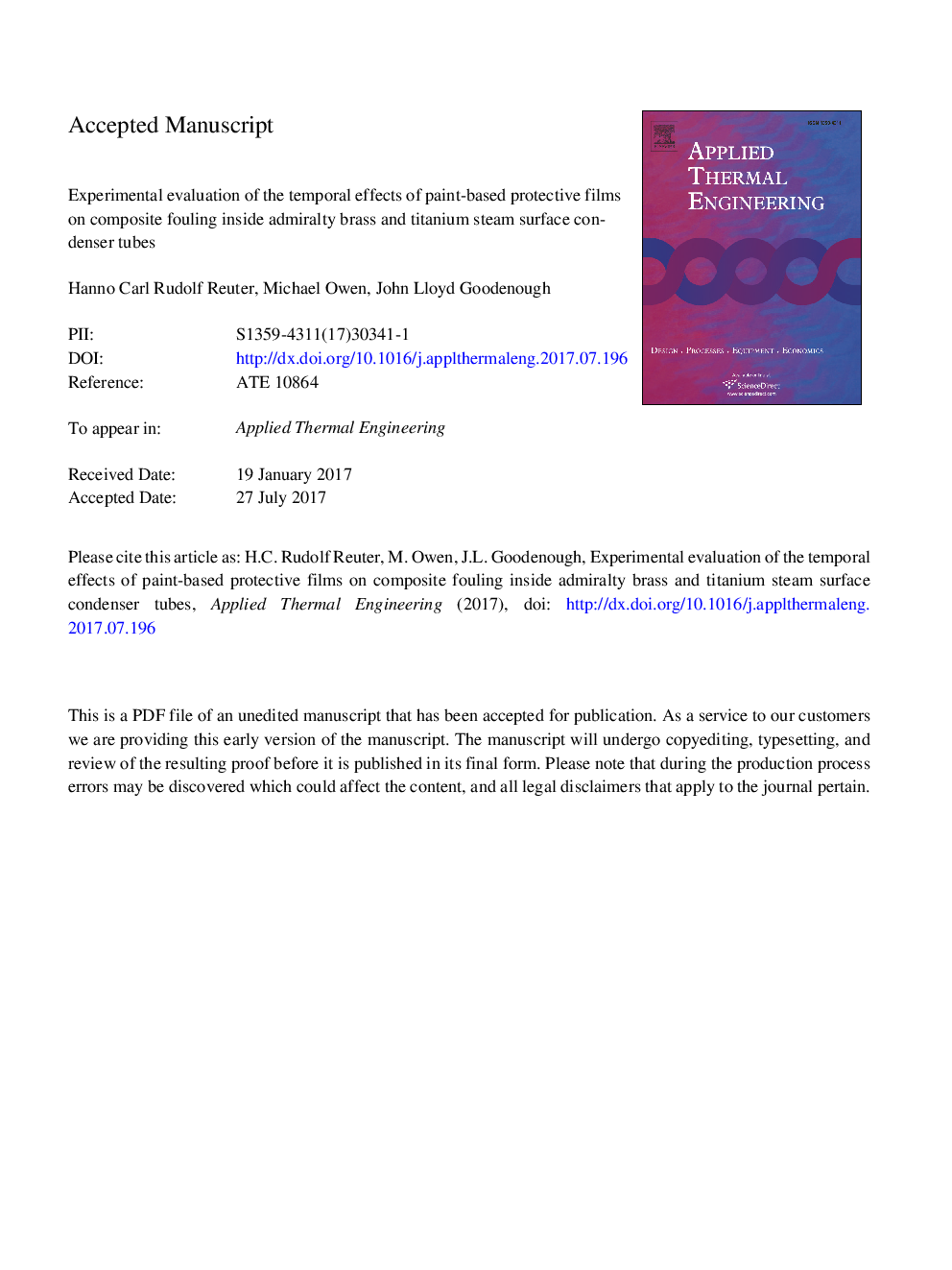ترجمه فارسی عنوان مقاله
ارزیابی تجربی اثرات زمانی از فیلم های محافظتی بر پایه های رنگی بر ضایعات کامپوزیت درون لوله های کندانسور سطح بخار برنجی و تیتانیوم
عنوان انگلیسی
Experimental evaluation of the temporal effects of paint-based protective films on composite fouling inside admiralty brass and titanium steam surface condenser tubes
| کد مقاله | سال انتشار | تعداد صفحات مقاله انگلیسی |
|---|---|---|
| 141570 | 2017 | 27 صفحه PDF |
منبع

Publisher : Elsevier - Science Direct (الزویر - ساینس دایرکت)
Journal : Applied Thermal Engineering, Volume 126, 5 November 2017, Pages 848-857
ترجمه کلمات کلیدی
ریزش مو، بیوفولینگ، پوشش لوله یخچال، برنج، تیتانیوم،
کلمات کلیدی انگلیسی
Fouling; Biofouling; Coating; Condenser tube; Brass; Titanium;

